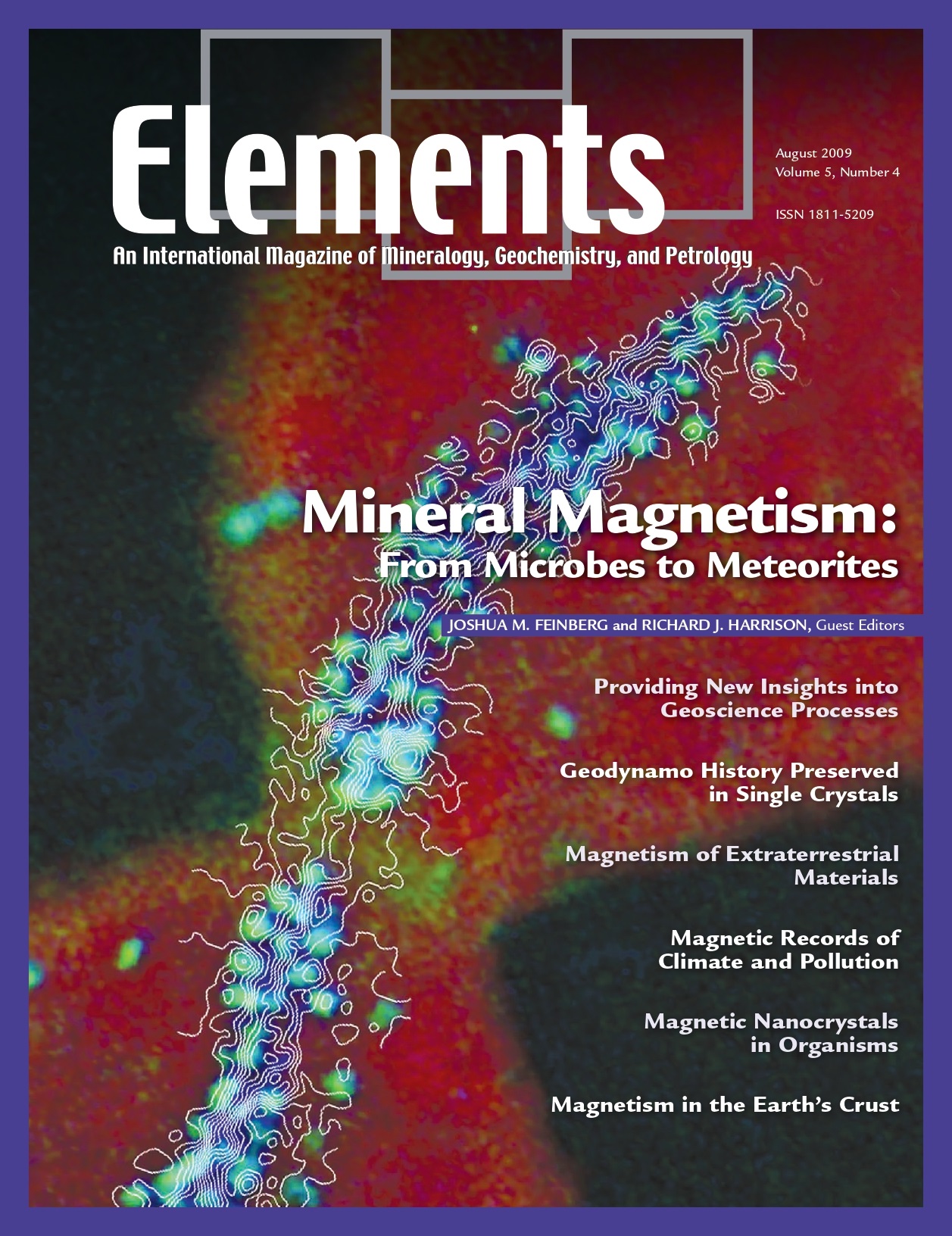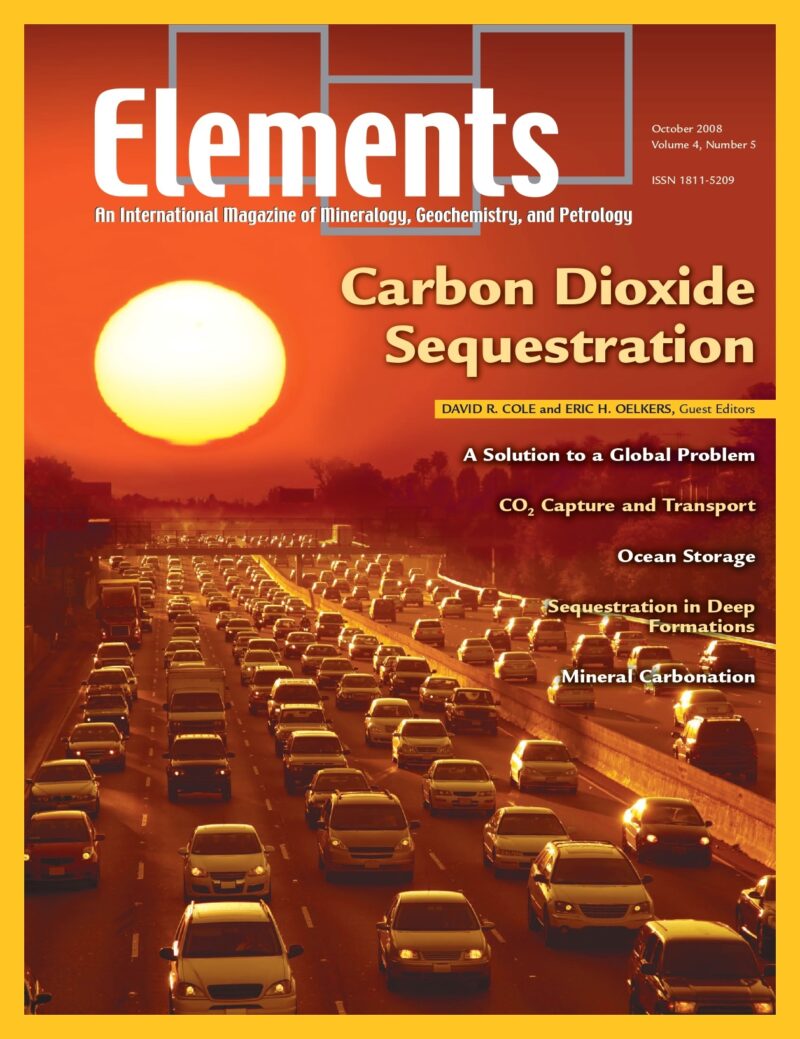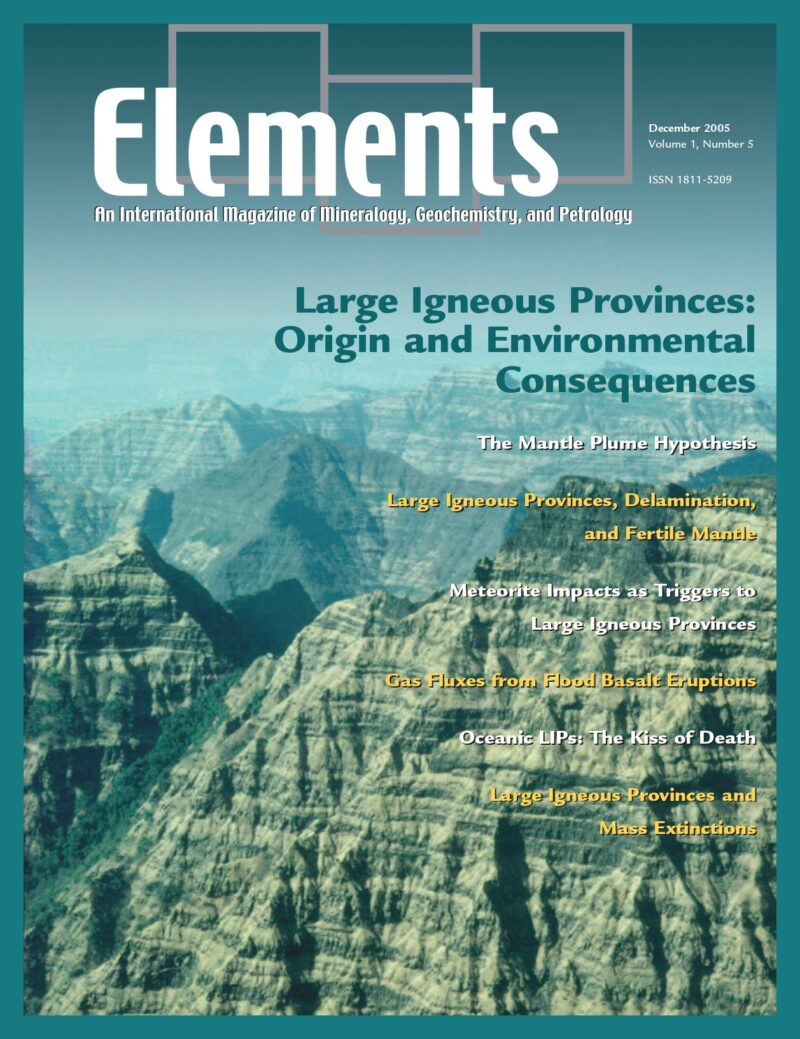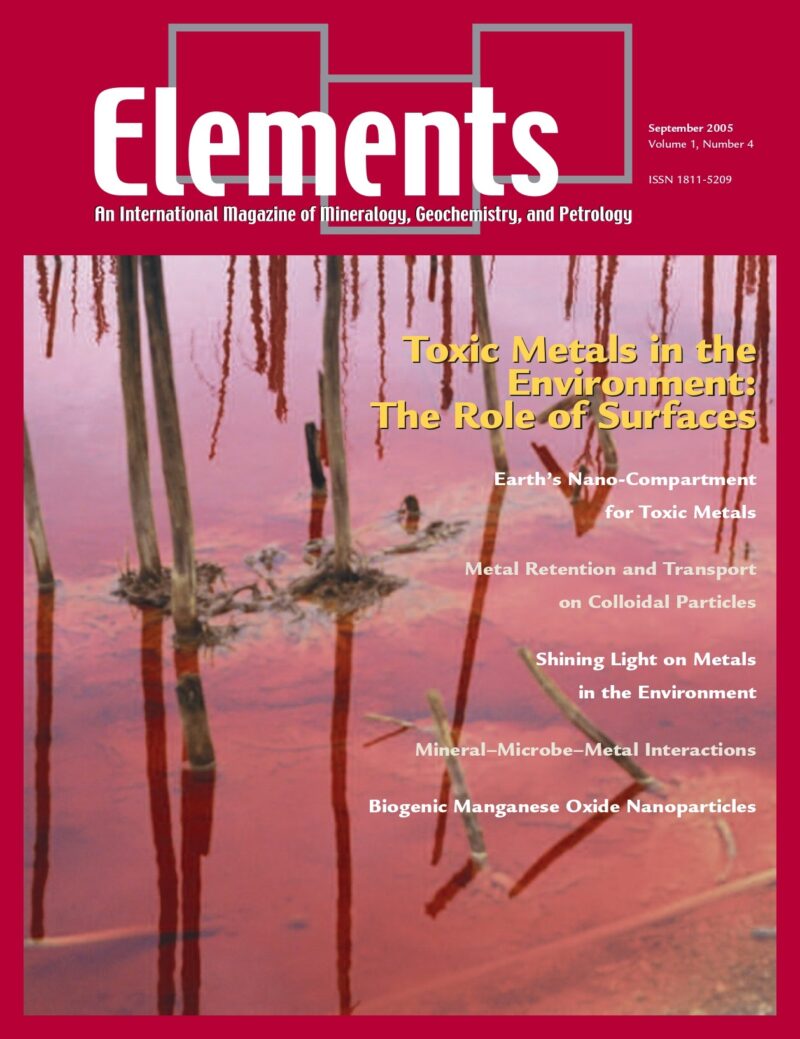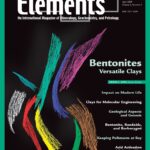
Bentonites – Versatile Clays, April 2009, Vol. 5, No. 2
June 28, 2024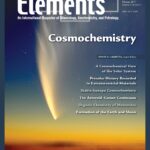
Cosmochemistry, February 2011, Vol. 7, No. 1
June 28, 2024Mineral Magnetism: From Microbes To Meteorites, August 2009, Vol. 5, No. 4
$20.00
Magnetic minerals are ubiquitous in the natural environment. They are also present in a wide range of biological organisms, from bacteria to human beings.
Mineral Magnetism: From Microbes To Meteorites
August 2009, Vol. 5, No. 4
Magnetic minerals are ubiquitous in the natural environment. They are also present in a wide range of biological organisms, from bacteria to human beings. These minerals carry a wealth of information encoded in their magnetic properties. Mineral magnetism decodes this information and applies it to an ever increasing range of geoscience problems, from the origin of magnetic anomalies on Mars to quantifying variations in Earth’s paleoclimate. The last ten years have seen a striking improvement in our ability to detect and image, with higher and higher resolution, the magnetization of minerals in geological and biological samples. This issue is devoted to some of the most exciting recent developments in mineral magnetism and their applications to Earth and environmental sciences, astrophysics, and biology.
Why You’ll Love Elements Magazine:
- Expert Contributors: Articles written by renowned researchers in the field of geoscience.
- Engaging Content: Join a community of readers who are passionate about Elements.
- Exceptional Quality: Each issue is printed on high-quality paper with stunning visuals and detailed illustrations that bring complex scientific concepts to life.
Order your copy of the August 2009 issue of Elements magazine today and delve into mineral magnetism from microbes to meteorites.
Related products
-
Carbon Dioxide Sequestration, October 2008, Vol. 4, No. 5
$20.00Storage of carbon in the subsurface involves introduction of supercritical CO2 into rock formations beneath the surface of the Earth, typically at depths of 1000 to 4000 meters. Although CO2 is a relatively benign substance, the volume being considered is large.
-
Large Igneous Provinces: Origin And Environmental Consequences, December 2005, Vol. 1, No. 5
$20.00Large igneous provinces record major outpourings of igneous rocks, both on the continents and in ocean basins. Their origin is still vigorously disputed, with models invoking mantle plumes, thermal effects of the lithosphere, and meteorite impacts.
-
Toxic Metals In The Environment: The Role Of Surfaces, September 2005, Vol. 1, No. 4
$20.00Metals are prevalent in the environment. They are derived from both natural and anthropogenic sources.

